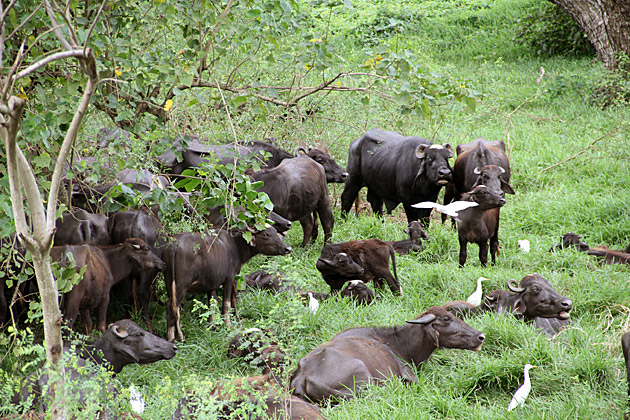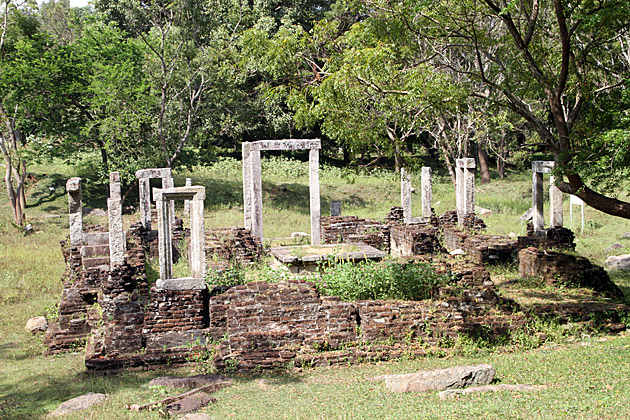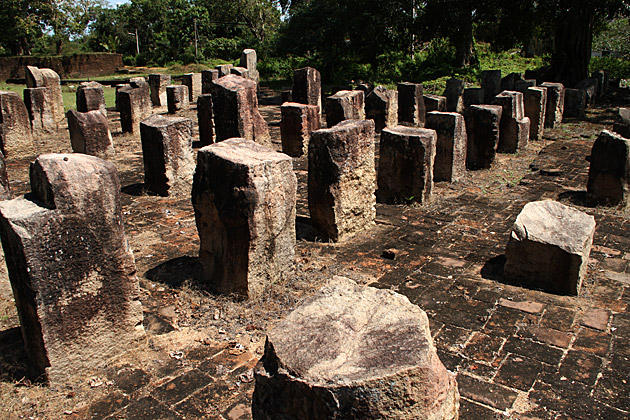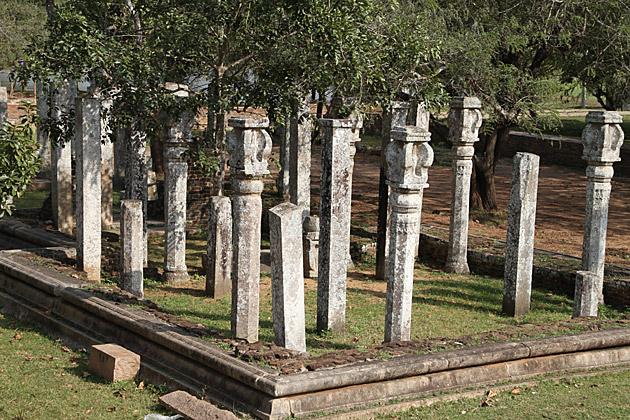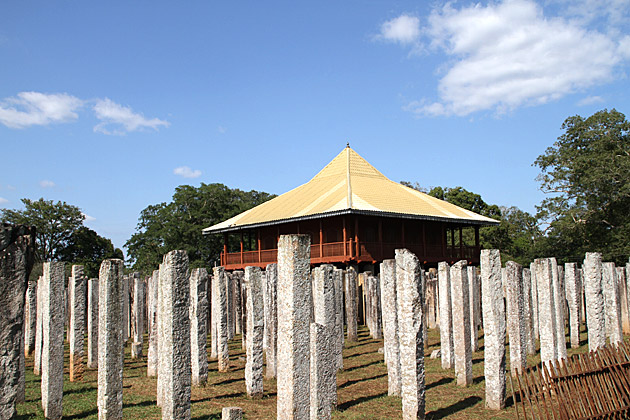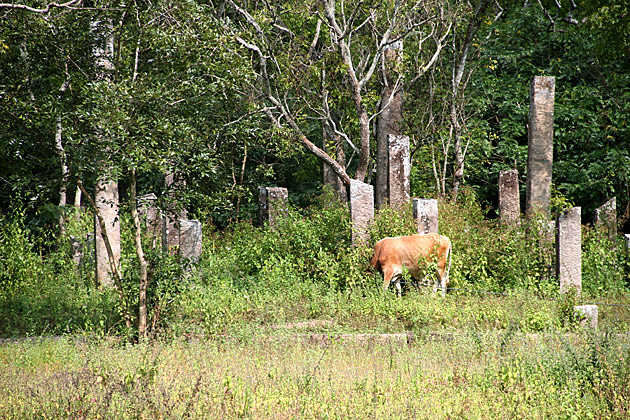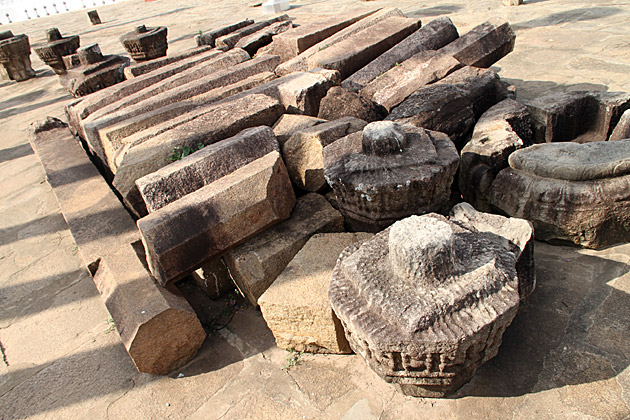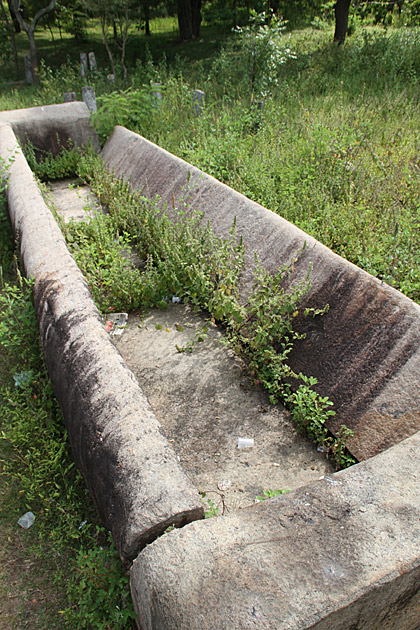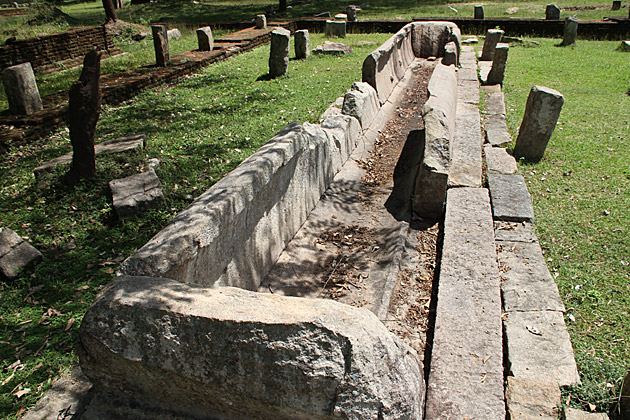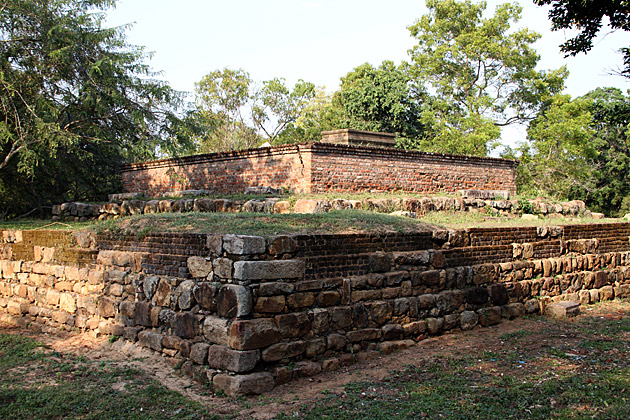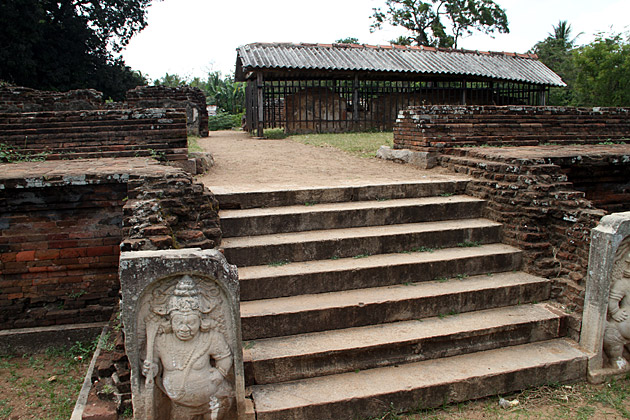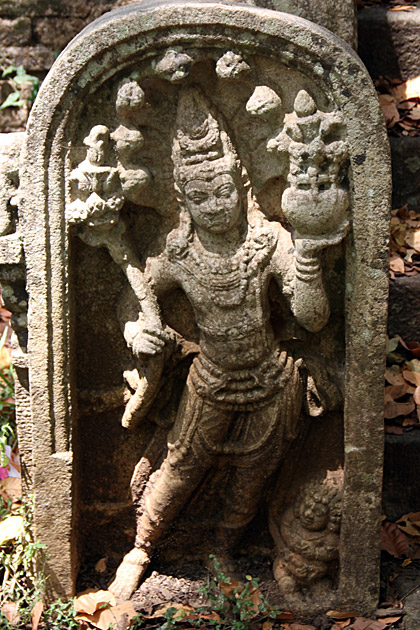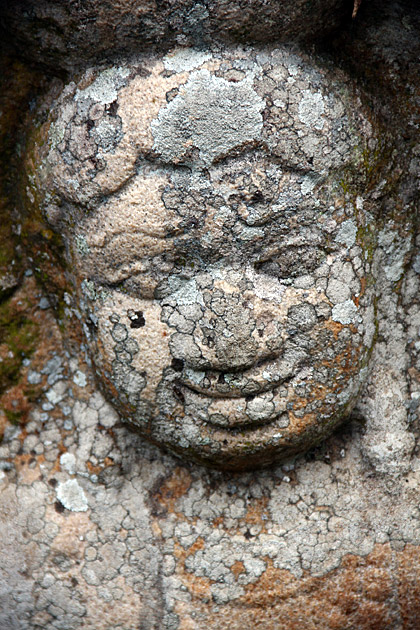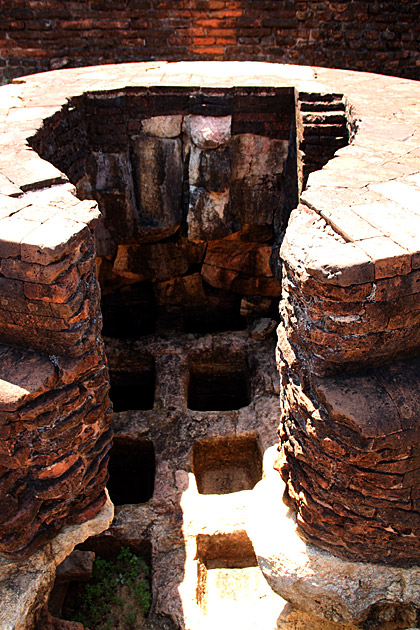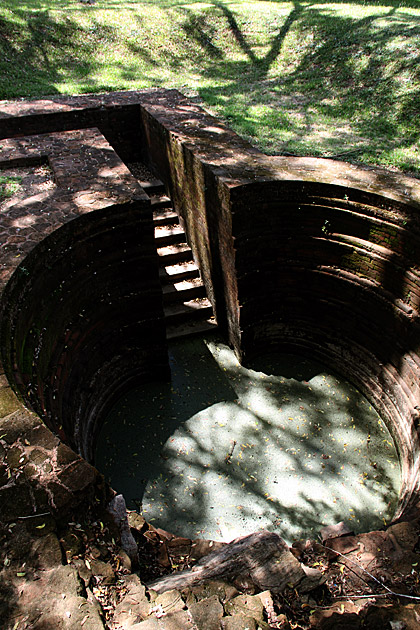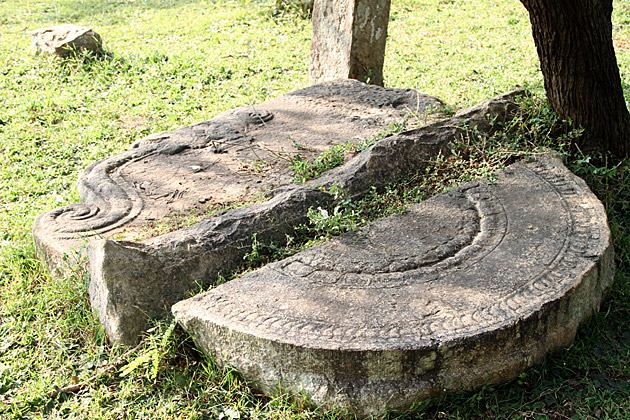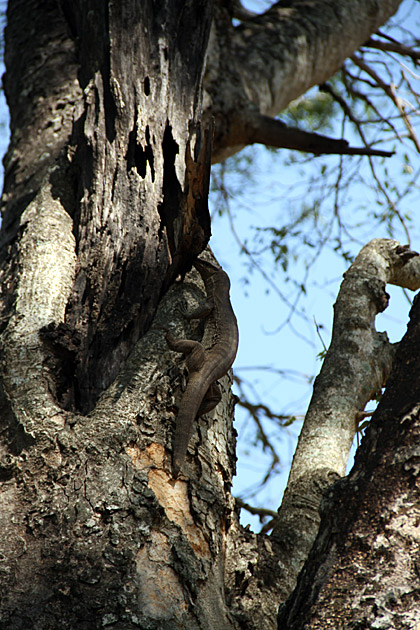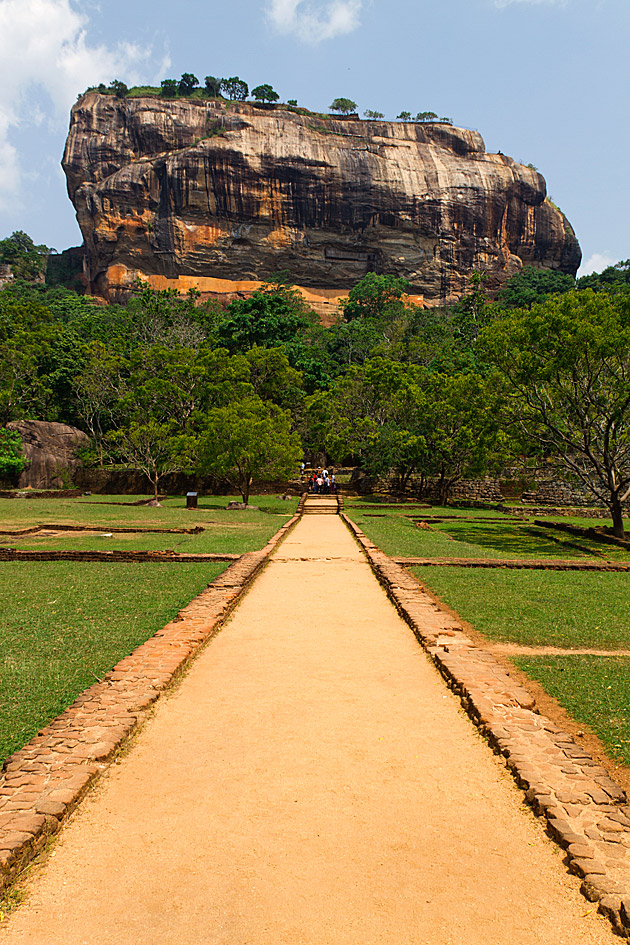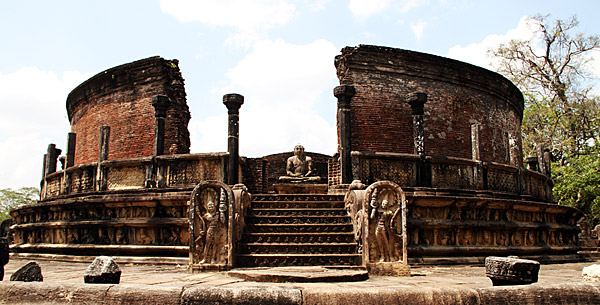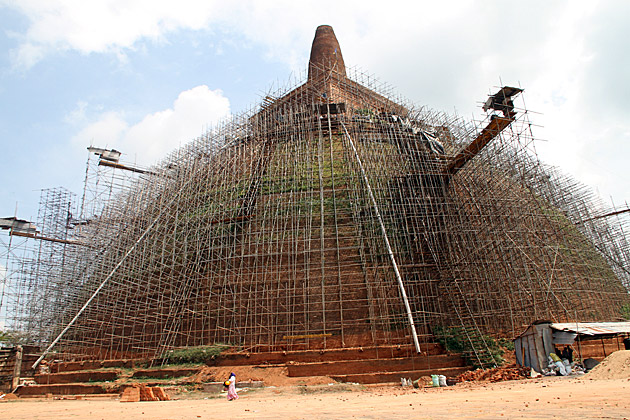Echoes of the Past – Anuradhapura’s Ruins
The only thing more abundant in Anuradhapura’s Sacred City than monkeys, is ruins. Pools, prayer halls, refectories, temples, residences; ruins great and small, in varying states of decay. These vestiges of the past serve as silent testaments to the former glory of Anuradhapura.
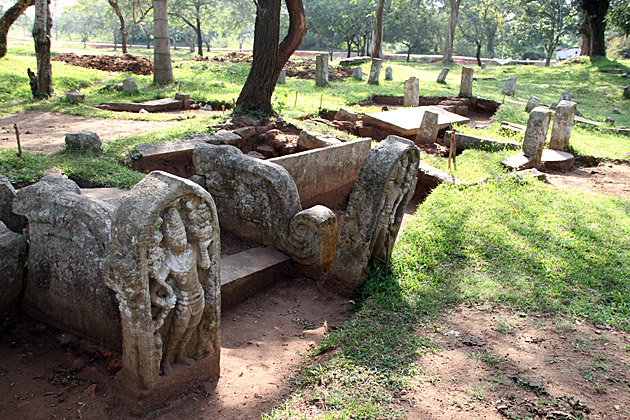
The former capital of Sri Lanka was defined by three great Buddhist monasteries. The Mahavihara was the first and sits in the center of the Sacred City, around the Sri Maha Bodhi tree. Just to the north is the Jetavana, founded in a petulant rage during the 2nd century BC after the king fell out with the monks of Mahavihara. Further north is the Abhayagiri, founded in 88BC and known as a liberal center for new Buddhist ideas — a stance which earned it the ire of the other, conservative monasteries. All three were home to thousands of monks, who needed buildings in which to live, eat and worship.
The traces of those buildings are what we see today when touring Anuradhapura. Most of the walls have crumbled and many of the ruins are nothing more than scattered stones, outlines of the foundations, or an odd column planted crookedly in the ground. But an amazing amount has survived the passage of two millennia in excellent shape. Guardstones with serpent kings, or moonstones which depict the levels of human existence in exquisitely carved patterns. Long troughs which were once filled with rice for the resident monks. Ancient baths now inhabited by turtles, and key-shaped wells used for fresh water.
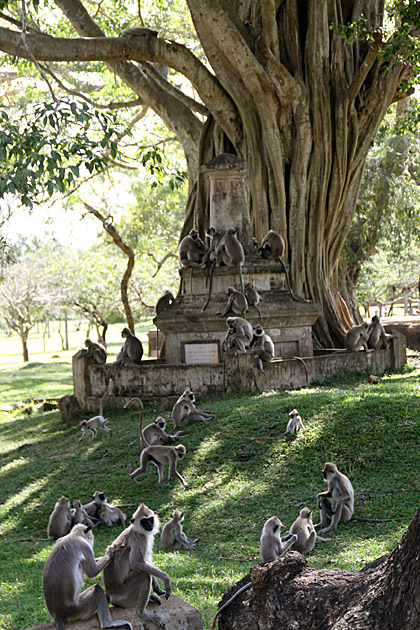
Roughly situated in the middle of Anuradhapura’s three great monasteries is The Citadel, a large secular area, protected by a moat. Here, we found the Royal Palace and the ruins of the first Temple of the Tooth — nowhere near as large as the relic’s current house in Kandy. A large tent covered an archaeological dig, at least six meters deep, which revealed buried roads and layers of construction. And, blending into the scenery, an innumerable number of ruins lend the Citadel an ancient, romantic atmosphere.
Wandering through the forests spotted with decayed temples, while water buffalo are grazing to your left, monkeys are playing to your right, and shimmering paddy fields stretch off in front of you… it’s hard to remain unmoved. One can only envy the British explorers who first discovered the Sacred City. But when there are no other tourists around, and you’re pushing through shrubbery to arrive at an ancient temple half-covered in plants, it’s not hard to imagine that you’re the intrepid adventurer who’s discovered it.
